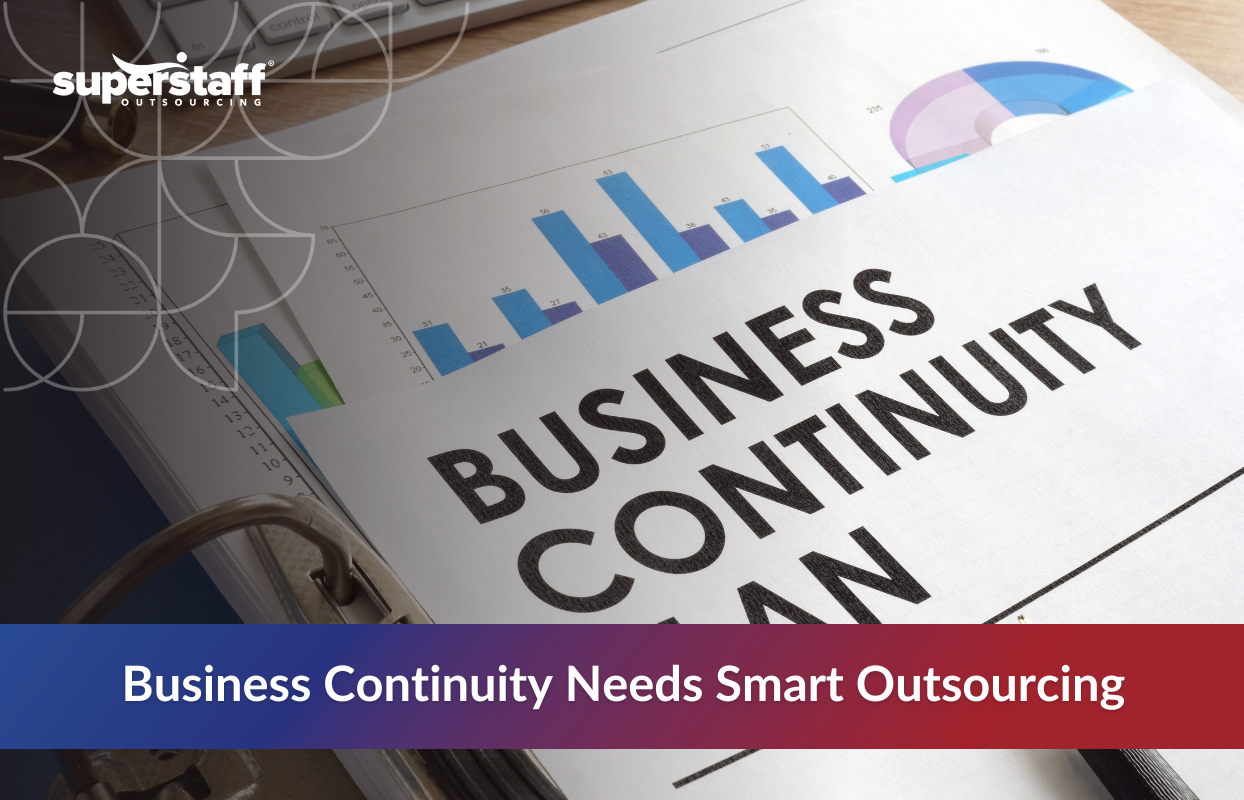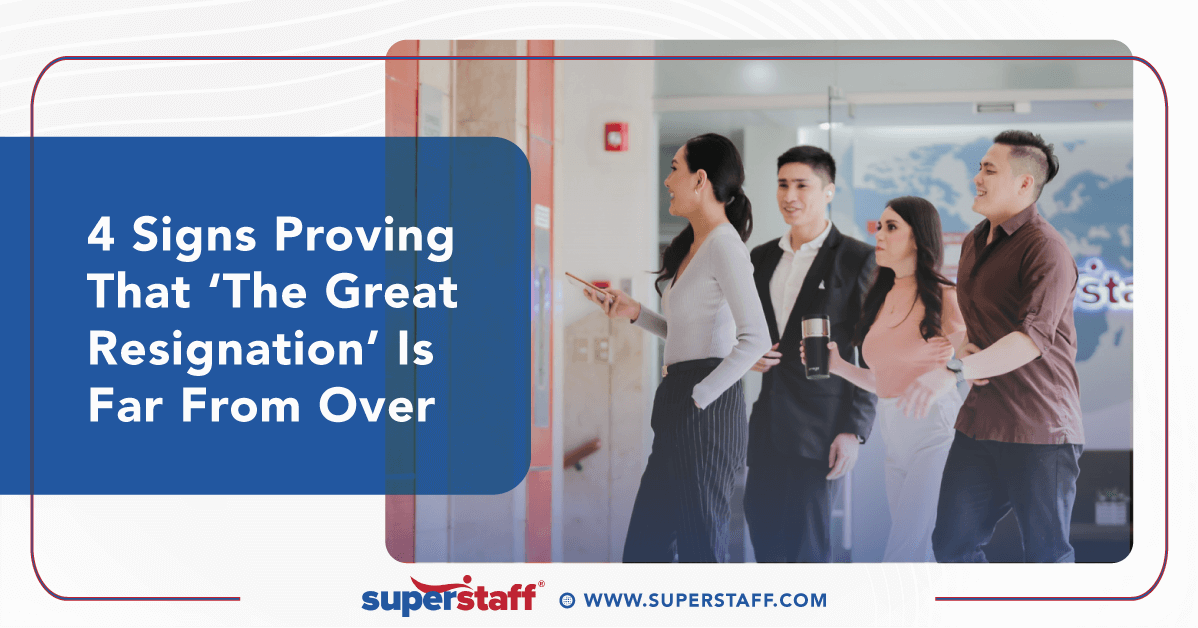
Companies struggling with employee retention became optimistic when the U.S. Labor Department reported a 3.4% drop in quit rate in January, the lowest since October 2021.
Thereafter, some economists believed that “The Great Resignation” trend would slow down to a complete halt in the next few quarters. After all, there have been other factors at play like inflation, the ongoing Russia-Ukraine conflict, and rising interest rates.
Instead of quitting their jobs, people might realize the importance of having one in this troubling time. Most particularly so when a handful of industries have begun layoffs.
For instance, tech start-ups have already laid off about 4,000 people because of a decline in funding. Even tech giants have also been letting employees go (Robinhood and Netflix) or have lessened hiring activities (Uber and Meta) to reduce costs. These trends may trickle down across other sectors, at least from the perspective of market observers.
Still, we can’t help but ask: Are these events signaling the reversal of “The Great Resignation” trend? Should companies pivot away from strategies addressing the labor crunch and wait until the labor market reclaims its balance?
We think not.
Is ‘The Great Resignation’ Over? Here’s Why We Believe It’s Not
We’ve rounded up the top four reasons why we believe “The Great Resignation” is not backing down. We think it’s becoming a cycle, a loop that will continue to affect the labor market for a long time.
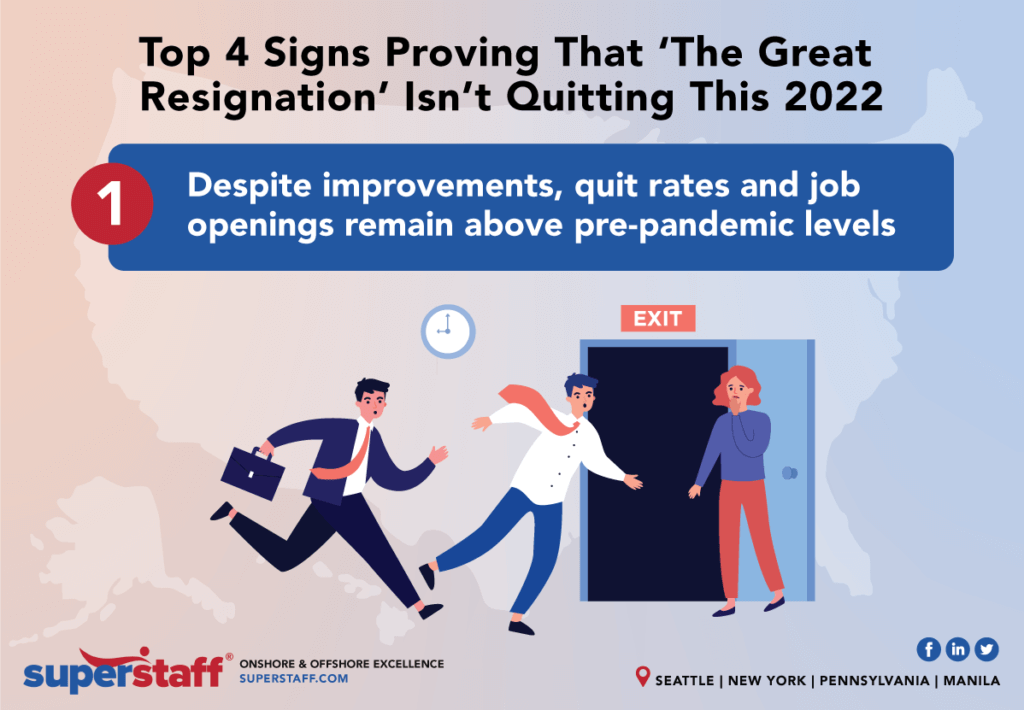
1. Despite improvements, quit rates and job openings remain above pre-pandemic levels.
More than two years since the pandemic first hit, the job market still hasn’t bounced back. The latest figures show that “The Great Resignation” has continuously haunted businesses.
The Bureau of Labor Statistics reported that job openings (11.5 million) and quit rates (4.5 million) were at a series high in March. We can deduce from these figures that there have been record-high job openings because there have been record-high resignations.
The parallel movement between resignations and job openings reflects a vicious cycle that’s leaving the labor market volatile. What’s behind this cycle? Workers know that they can quit and still find better jobs.
Those who left are not permanently out of the labor market. They have found better opportunities with higher wages from companies filling vacant positions. Indeed, a Pew Research Center study revealed that over half of the employees who left their jobs in 2021 received higher wages in their new companies.
Worst, resignations are becoming contagious. How is this happening? Colleagues who heard about those who resigned receiving better salaries thereafter replicate the move. A study defined this trend as turnover contagion. With this cycle continuing in a loop, quit rates and job openings will never achieve balance, at least not in the near future.
Read More: 11 Excellent Ways Leaders Can Navigate ‘The Great Resignation’
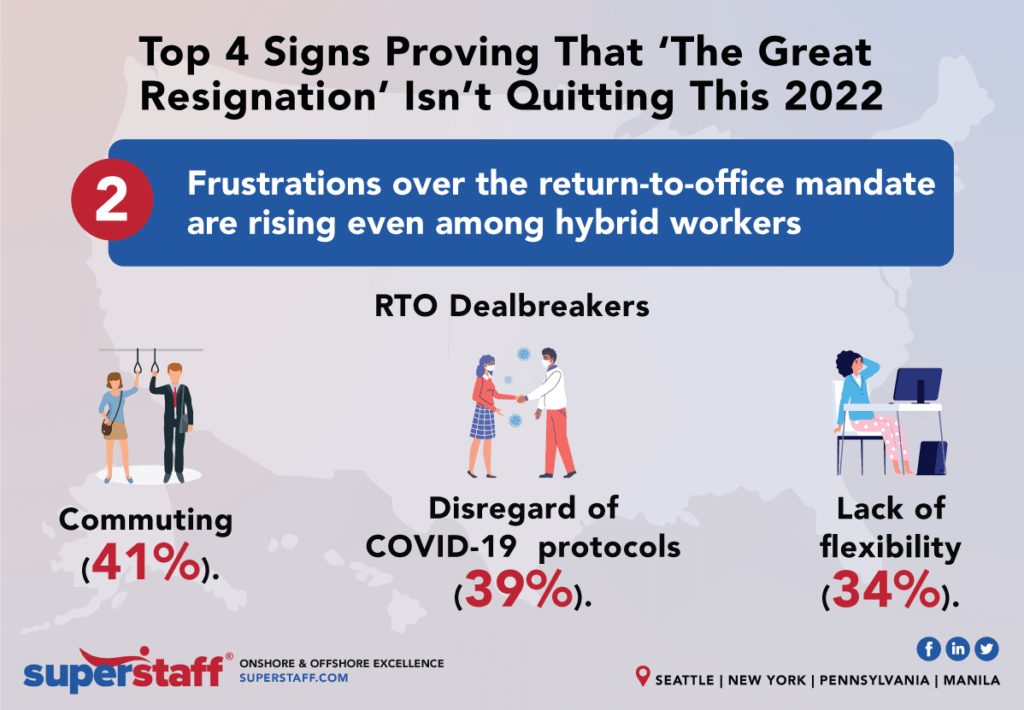
2. Frustrations over the return-to-office mandate are rising even among hybrid workers.
COVID-19 drove some 50 million U.S. employees to work remotely. The number of Americans working from home rose from only 4% in 2019 to 43% by May of 2020.
Two years later, with cases dwindling and restrictions easing, businesses urge their employees to return to the office. The decision has sparked anxiety, fear, and even annoyance for most. The feeling is the same even for employees who are only required to report 2–3 days in the office.
Why the negative sentiments? Sixty-seven percent of employees who worked remotely felt more productive at home than at the office. They considered socializing with workmates not just a taxing chore but also a hindrance to their tasks, especially for new hires who have yet to meet their colleagues in person. Other RTO dealbreakers included:
- Commuting (41%).
- Disregard of COVID-19 protocols (39%).
- Lack of flexibility (34%).
Employees have also been skeptical of the new normal office dynamic, which includes in-person Zoom meetings. Companies argue that Zoom calls can be simpler than hauling people into a conference room. But this can be unpleasant for those who travel to the office only to attend online calls, which they have already been doing back home.
There are also several technical issues during in-person Zoom meetings. For instance, the mics create echoes when two or more people are in the office on the same Zoom call.
Overall, those asked to return to the office view the mandate as a waste of their supposedly more productive time if instead allowed to continue working from home.
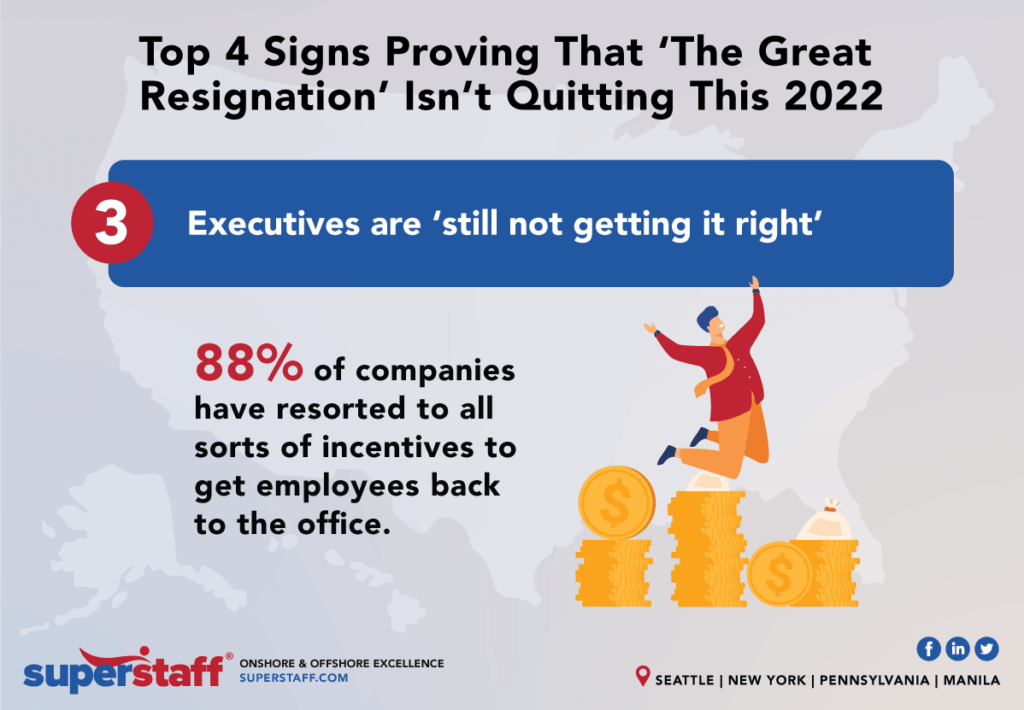
3. Executives are ‘still not getting it right.’
The frustrations over RTO mandates are more profound than explained above. There is a growing sentiment that leaders who want employees back in the office are insensitive to employees’ plight.
Many believe that executives based their RTO decisions on their own experience of working in the office: enjoying a comfortable space with big glass windows and a convenient commute in their cars. That reality for executives is far from what employees endure. Hence, employees feel a big disconnect with their employers.
Band-aid solutions like hiking wages and incentives may not be enough to retain employees once they feel this way. Indeed, a study found that 88% of companies have resorted to all sorts of incentives to get employees back to the office. Still, many are choosing to leave their jobs.
On the other hand, some employers overburdened their employees with tasks when the labor crunch first hit. Disgruntled employees suffered from exhaustion and feelings of underappreciation when they weren’t given a salary commensurate to what they brought to the table.
Left unresolved, employees’ issues festered and drove “The Great Resignation” trend to a bigger underlying movement: a modern-day revolution against businesses unaware of their employees’ deeper needs.
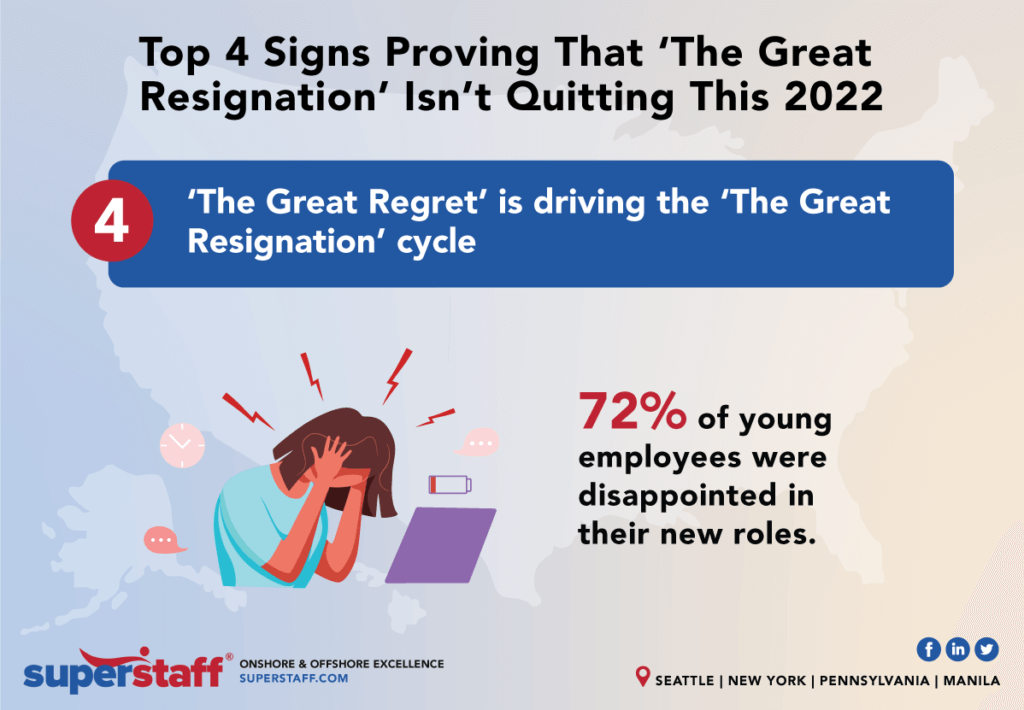
4. ‘The Great Regret’ is driving the ‘The Great Resignation’ cycle.
After leaving their jobs for better opportunities, some employees who have joined “The Great Resignation” are reportedly experiencing “The Great Regret.” Two to six months into their new positions, employees are finding out that job ads oversold positions in a desperate attempt to hire amid the labor shortage.
Additionally, some employers are rushing to hire, resulting in mismatched skills. Workers, therefore, have been compelled to learn new skills in a short period and have been experiencing exhaustion in the process.
A Muse survey revealed that 72% of young employees were disappointed in their new roles. The reality was far from what they were led to believe in the application process. Some of those who felt regret would attempt to reclaim the jobs they left. Many would try to stay but would only give it an average of six months. Then, they will resign and go again for a new job hunting spree.
Read more: 5 Helpful Tips for Navigating the ‘The Great Reshuffle’
How Outsourcing Can Help Businesses
In the past few years, the BPO industry has reshaped the way we do business with its economic gains, streamlined processes, scalability, and access to a global workforce. Companies across all sectors, from industry leaders to start-ups, are now turning to outsourcing as a long-term solution to the labor crunch.
Unfazed by the pandemic and “The Great Resignation,” SuperStaff grew by 280%, and our employee retention rate rose to 89% in the past two years. We can help you do the same. Contact us today to learn more about our outsourcing solutions.


